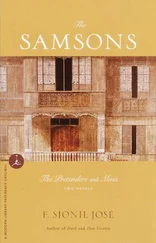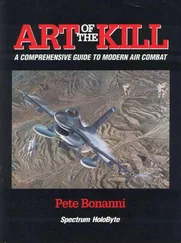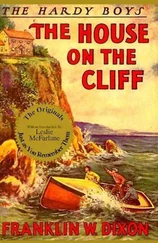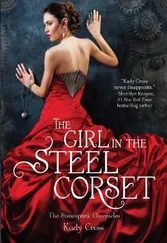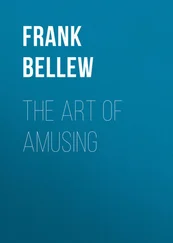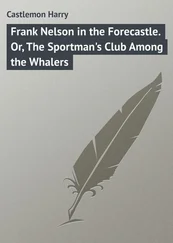Frank Abagnale - The Art of the Steal
Здесь есть возможность читать онлайн «Frank Abagnale - The Art of the Steal» весь текст электронной книги совершенно бесплатно (целиком полную версию без сокращений). В некоторых случаях можно слушать аудио, скачать через торрент в формате fb2 и присутствует краткое содержание. Год выпуска: 2001, ISBN: 2001, Издательство: Broadway Books, Жанр: Старинная литература, на английском языке. Описание произведения, (предисловие) а так же отзывы посетителей доступны на портале библиотеки ЛибКат.
- Название:The Art of the Steal
- Автор:
- Издательство:Broadway Books
- Жанр:
- Год:2001
- ISBN:9780767910910
- Рейтинг книги:4 / 5. Голосов: 1
-
Избранное:Добавить в избранное
- Отзывы:
-
Ваша оценка:
- 80
- 1
- 2
- 3
- 4
- 5
The Art of the Steal: краткое содержание, описание и аннотация
Предлагаем к чтению аннотацию, описание, краткое содержание или предисловие (зависит от того, что написал сам автор книги «The Art of the Steal»). Если вы не нашли необходимую информацию о книге — напишите в комментариях, мы постараемся отыскать её.
The Art of the Steal — читать онлайн бесплатно полную книгу (весь текст) целиком
Ниже представлен текст книги, разбитый по страницам. Система сохранения места последней прочитанной страницы, позволяет с удобством читать онлайн бесплатно книгу «The Art of the Steal», без необходимости каждый раз заново искать на чём Вы остановились. Поставьте закладку, и сможете в любой момент перейти на страницу, на которой закончили чтение.
Интервал:
Закладка:
To circumvent this, bad check passers, when they set up accounts, try to obtain the highest possible check number they can get. This is usually done by asking the new accounts department to start their checks with a sequence number like 800. In many cases, they are denied. Most banks use a standard starter number of 101 for new checking accounts. Unfortunately, in recent years many new accounts departments have become very lax and, to oblige customers, will let them start their account with any number they request. Or they don’t pay attention to unusual reorder activity, even though criminals reorder checks every twenty or thirty days so they can get a higher sequence number. If all else fails, a criminal can buy checks through the mail, requesting any sequence number he wants.
For this reason, you can’t depend on the check number alone, but it’s a good tip-off for when you should use discretion. If you get a low-numbered check, that would be the time to ask for additional identification, to call the bank if it’s a large purchase, or to use a check verification company to guarantee the check. Remember: 90 percent of worthless checks are numbered between 101 and 200.
WHAT CAN BE DONE?
Over twenty years ago, a technique was developed that is referred to in banking as “date coding.” A date code is a tiny three-digit or four-digit number that appears on the front of a check to indicate when the account was opened. For example, the number 879 would mean that this checking account was opened in August of 1979. This coding is done automatically by the check printer. No matter how many checks a customer orders or reorders, this number will always appear on the face of the check. The date code helps you determine the stability and credibility of the person writing the check. Even checks ordered through the mail from a catalogue will have a date code on them if it’s required by the state where the person lives.
I recommend that all institutions date code checks. And I recommend that retailers teach employees how to read date codes on checks. The date code is sometimes found above the signature line or above the “pay to the order” provision, but most commonly next to the customer’s name. The older the date code, the more established the person who has written the checks.
THOSE HANDY DEPOSIT SLIPS
I was speaking one day with a new acquaintance, and I asked him for a business card so I could stay in touch. After fumbling around in his pockets, he could only come up with a deposit slip from his personal checking account. He handed it to me with a smile. I smiled back and told him, “I’m the last person you want to give this to.”
Deposit slips seem harmless enough. That’s why most people write grocery lists on them, hand them out as business cards, or simply discard them when they run out of checks. But a deposit slip is actually an exceedingly valuable slip of paper. To a forger, a deposit slip is worth ten times more than a blank check.
The slips are used in a common scam called “less cash deposit” or “split deposit.” After obtaining a blank deposit slip, the criminal will write a forged check to the person named on the deposit slip. He’ll then proceed to the bank listed on the front of the deposit slip, and deposit a check in the amount of, say, six hundred dollars. In the line “less cash received,” he’ll write three hundred dollars back. The teller, especially a busy one, will think, Why should I bother to ask for ID? The person is obviously a customer of our bank and has enough funds in the account to cover the check. Plus, he’s depositing more than he’s withdrawing. She hands over the cash and the check writer drives away three hundred dollars richer. The bank is stuck with a worthless check. Less cash deposit scams occur more than two thousand times a day at drive-up windows of banks, savings and loan institutions, and credit unions.
WHAT TO DO
I advise tellers to pay very close attention to less cash deposits. Anytime you return more than twenty-five dollars to anyone you don’t know, ask for identification. Deposit slips also have date codes on them. Look at them, because they can give you an idea of the stability and credibility of the account. And I tell everyone, don’t give out blank deposit slips at the bar instead of business cards, or leave them in the grocery store cart.
STOP PAYMENT START-UPS
Many companies and municipalities have been burned by stale-dated stop payment orders. In these cases, dishonest recipients receive a check, then tell the issuer that it never arrived. So the company will place a stop payment order on the check and issue a new one. The second check is immediately cashed. The original check is saved for a rainy day, which usually comes about six months later.
Shrewd con artists know that stop payments at most banks are good for only 180 days. After that, they expire. At that point, they have to be renewed for another 180 days. The trouble is, few companies bother to renew them. The con artist will patiently bide his time for 181 days before negotiating the second check, which will pay almost every time.
WHAT TO DO
A little extra investment on the part of the company can easily prevent this scam. Put an extended stop payment period on the check, like 999 days. The bank’s limit for a stop payment period needs to be a three-digit number, and 999 fits as easily as 180. Even the most patient con artist doesn’t have that much patience. At most banks, stop payments cost between a dollar and two dollars a month. Many companies have dozens or even hundreds of stop payment orders in effect at any one time. Although the cost can add up, the exposure for loss is far greater.
FORGERY: HOURS OF FUN
Now, let’s take a look at forgery. Forgery has increased considerably since 1975. The major reason for this is technology.
Twenty-five years ago, it used to take me twelve weeks to create a check. A truly sophisticated forger needed a four-color printing press that cost a quarter of a million dollars. Today, I can create a check with a laptop computer, a laser printer, and a scanner in my hotel room in twelve minutes. The New York Times once calculated that a forger can buy everything he needs for about five thousand dollars. Of course, it doesn’t cost him anything. He pays by check.
A number of years ago, a business writer submitted an article to Forbes magazine, and the editors printed it, paid him, and also sent him a check in the amount of $333.33 to cover his expenses. The writer lived in a one-bedroom apartment in Boston, and he owned an old Apple computer, a printer, and a scanner. As an experiment, and with the blessings of his editors, he decided to try to demonstrate how easily he could transform that meager check into some real money. So he laid the check on the scanner and brought it up on the screen. Once it was on the screen, he could do anything he wanted to it.
He zoomed in on the amount box, locked on it, and removed the dollar amount of the check with his mouse. Then he went to the written legal amount of the check and deleted it. Then he asked the computer to identify the fonts. Back then, a home computer could match 122 fonts. Today, computers can match thousands of fonts. In just a few seconds, he was able to pretty closely match the font at the printer at the accounts payable department at Forbes magazine. Using that font, he typed in a new amount number. He put the machine on pause and went out to a stationary store. He asked for green basketweave check paper, which anyone can buy at Office Depot, and bought enough to serve his needs. He also picked up a mechanical number stamp and some red ink.
He went home with his supplies, took the white paper out of the printer, inserted the green basketweave paper, and printed out the new check. He forged the two signatures it required using two different pens. He needed the number stamp so he could reconstruct the ink of the check number in red. Using an Exacto knife, he cut the check out of the 81⁄2 x 11 sheet so he could bring it down to the appropriate size. Once he was finished, he ended up with a check for $3O,333.33, which he felt much better reflected the value of his services.
Читать дальшеИнтервал:
Закладка:
Похожие книги на «The Art of the Steal»
Представляем Вашему вниманию похожие книги на «The Art of the Steal» списком для выбора. Мы отобрали схожую по названию и смыслу литературу в надежде предоставить читателям больше вариантов отыскать новые, интересные, ещё непрочитанные произведения.
Обсуждение, отзывы о книге «The Art of the Steal» и просто собственные мнения читателей. Оставьте ваши комментарии, напишите, что Вы думаете о произведении, его смысле или главных героях. Укажите что конкретно понравилось, а что нет, и почему Вы так считаете.

